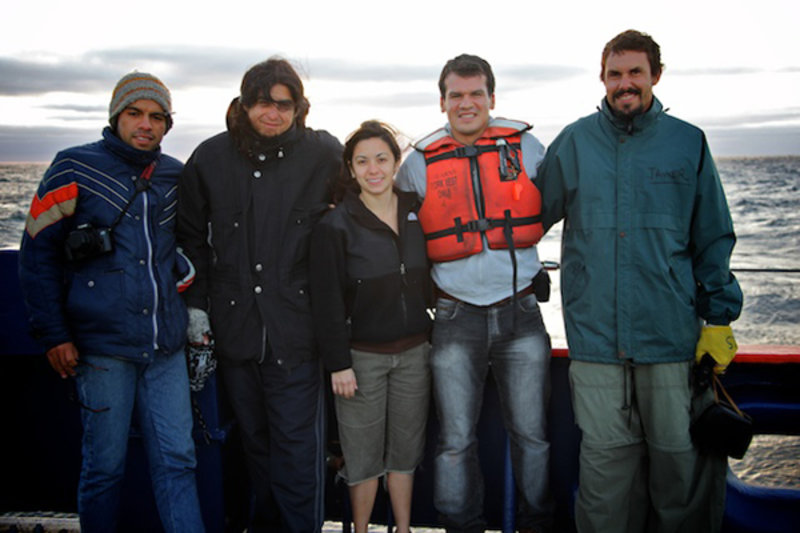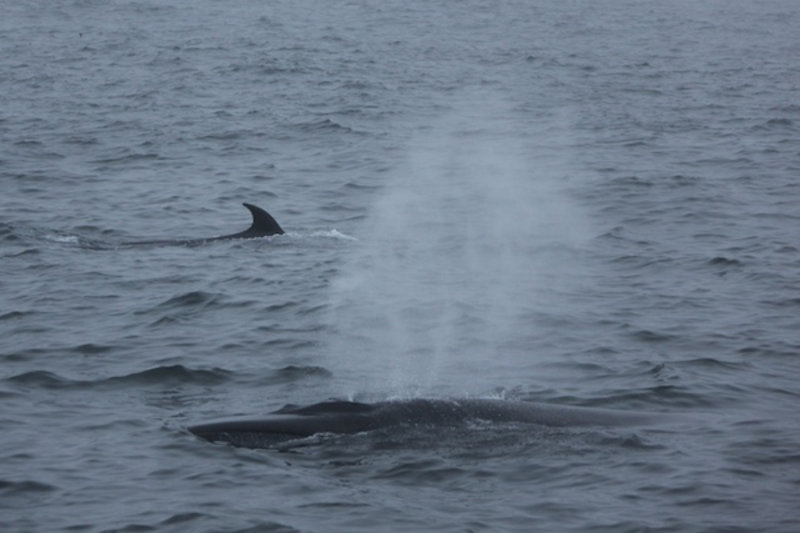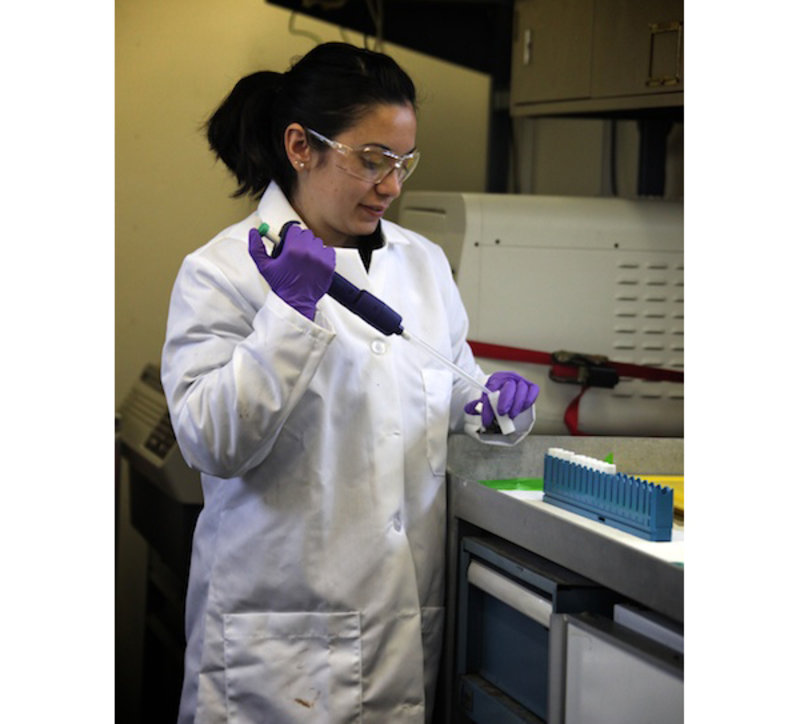
By Stephanie Mendes, University of California – Santa Barbara
February 27, 2010
This is Day 3 on board the research vessel (R/V) Melville, and things are starting to come together. The big science news of the day is we have begun to do tow-yos. This is where we place the conductivity, temperature, depth (CTD) instrument into the water and drag it through the water column as the ship continues to sail towards our destination. The detectors on the CTD are hooked up to computers onboard and we can see when the instrument passes through interesting water masses. Seep sites change the chemistry and condition of the water around it. As we are traveling down the continental margin on the way to the triple junction, we are hoping that we may pick up on areas which could have been influenced by seeps.

Some members of the sediment team (left to right): Fernando Gajardo Rojas, Francisco Valdés Robledo, Stephanie Mendes, Ives Melville, and Javier Sellanes. Image courtesy of INSPIRE: Chile Margin 2010. Download image (jpg, 76 KB).
I was surprised and excited to hear a Chilean scientist on this cruise was interested in collecting data similar to the data I plan to collect. This opened up an opportunity for us to work together as a team and to share ideas and workload. Since the lab space is limited, Ives Melville, a Chilean scientist, and I were creative with the space we were given. We worked together to set up a nitrogen tank that would accommodate both our needs and worked to manage our lab bench so it would be functional for two people.

We see whales! Image courtesy of INSPIRE: Chile Margin 2010. Download image (jpg, 63 KB).
Sharing the work load is not the only advantage for having a partner. Last night, Ives and I stayed up prepping our vials for samples, and it was a nice change to have someone to laugh with as we accomplished our tedious task. My other lab partner is Monica Heintz from University of California – Santa Barbara; and some of our work involves using radioactive tracers. When we work with radioactivity we are confined to a tin box on deck called the "rad van." This ensures that all our radioactive work stays confined to the van and never contaminates anything else.

Stephanie Mendes working in the radioactive isotope van. Image courtesy of INSPIRE: Chile Margin 2010. Download image (jpg, 61 KB).
Life on board is never boring. It seems like I am learning all of life’s essential skills all over again. Taking showers while sailing is an art. I have always taken for granted the ability of using two hands to shampoo my hair. Well, I have come to learn that one hand is always holding on to the wall while the other shampoos. I need to brace myself for the occasional wave.
Learning to live with the constant rocking is only part of the amusement we have on board. Earlier today I was called to go outside to see a pod of whales that were surrounding the ship. It was incredible! I’m amazed at the life we have seen. Ives also found a hurt seagull today and is trying to nurse it until we reach land again. Only time knows the adventures that we will encounter in the weeks to come.